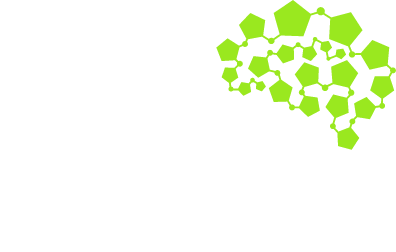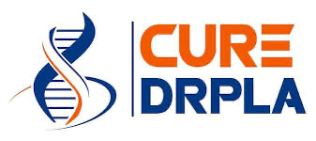Innovative Partnerships
Driving Progress
Patients and Families
Overview
At Vico, we are driven by an unparalleled commitment to improving the lives of patients and families affected by neurodegenerative diseases. We know the immense challenges families face, and we are dedicated to developing innovative therapies that can make a meaningful difference.
Clinical Trials
Vico is committed to conducting clinical trials with the utmost care, transparency and ethical integrity. The safety and well-being of our participants is always our top priority. For more information on our Phase 1 first-in-human trial to assess the safety and tolerability of VO659 in people with Huntington’s disease and spinocerebellar ataxia type 1 and 3, visit: clinicaltrials.gov.
Huntington’s Disease
Overview
Huntington’s disease (HD) is a rare, inherited neurodegenerative disorder that leads to progressive brain cell death. HD is caused by a mutation in the HTT gene, which encodes the protein huntingtin. This mutation involves an abnormal expansion of CAG repeats within the gene, resulting in the production of a toxic form of the huntingtin protein. While the disease’s genetic basis was confirmed more than 30 years ago, HD still poses significant challenges due to the lack of effective therapies.
Symptoms typically begin between the ages of 30 and 50 but can occur earlier or later. The condition affects movement, cognition and mental health, leading to a wide range of symptoms that gradually worsen over time. The disease follows a predictable course, progressing over roughly 10 to 25 years after symptoms first appeared. In later stages, patients may lose the ability to walk, speak and perform daily tasks, requiring full-time care.
Diagnosis and Genetic Testing
Diagnosis of Huntington’s disease is based on clinical symptoms, family history and genetic testing which can confirm the diagnosis by identifying the presence of the expanded CAG repeats in the HTT gene.
Looking Forward
Although Huntington’s disease remains a challenging condition, advances in genetic research and targeted therapies are bringing us closer to new treatments that could alter the disease’s course. At Vico Therapeutics, we are committed to advancing research that targets the genetic and molecular roots of HD, aiming to bring new options and hope to patients and families affected by this condition.
Current Therapeutic Landscape
Despite decades of research, there are no disease-modifying treatments for Huntington’s disease. Existing medications only manage symptoms without slowing or stopping disease progression. Researchers are exploring potential treatments that could target the root cause of HD by reducing levels of the mutant huntingtin protein, improving cellular resilience or addressing other pathways involved in the disease. Advanced therapeutic approaches, such as antisense oligonucleotides (ASOs), gene therapy and small molecule drugs, are in development and in clinical trials, offering new hope for patients and families.
Spinocerebellar Ataxia Type 1 (SCA1)
Overview
Spinocerebellar Ataxia Type 1 (SCA1) is a rare, inherited neurodegenerative disorder that affects the cerebellum, brainstem and spinal cord, leading to progressive loss of coordination and movement control. SCA1 belongs to a group of genetic disorders known as polyglutamine (poly-Q) diseases, which include Huntington’s disease and other forms of spinocerebellar ataxia. SCA1 is caused by a mutation in the ATXN1 gene, resulting in an abnormal expansion of CAG repeat expansion mutation that produces a toxic form of the ataxin-1 protein. This disease is slowly progressive and, despite extensive research, still has no disease-modifying treatments.
Symptoms of SCA1 usually begin in early adulthood but can appear at any age. The disease affects motor control, speech and swallowing, progressing over time as more nerve cells are damaged. The progression of SCA1 is gradual but relentless. Life expectancy can vary depending on the age of onset, with later-onset cases generally progressing more slowly. In advanced stages, patients may require assistance with daily tasks and full-time care.
Diagnosis and Genetic Testing
SCA1 is diagnosed based on clinical symptoms, family history and genetic testing. Genetic testing can confirm the presence of an expanded CAG repeat expansion mutation within the ATXN1 gene, which is diagnostic for SCA1.
Looking Forward
With SCA1 research advancing rapidly, new therapeutic options are on the horizon. At Vico Therapeutics, we are committed to developing treatments that target the genetic and molecular roots of poly-Q diseases, including SCA1, to offer hope and new options to individuals and families living with these challenging conditions.
Current Therapeutic Landscape
Currently, there are no therapies that can slow or stop the progression of SCA1. Treatment options are limited to symptom management but recent advances in molecular biology and genetics have opened up potential new therapeutic avenues. Research is focused on targeting the mutated ATXN1 gene, reducing toxic ataxin-1 protein levels and preventing nerve cell damage. Approaches such as antisense oligonucleotides (ASOs) are being explored, aiming to alter the disease at its source and potentially giving patients more years of function and improved quality of life.
Spinocerebellar Ataxia Type 3 (SCA3)
Overview
SCA3, also known as Machado-Joseph disease, is a rare inherited neurological condition that progressively damages nerve cells in the cerebellum and surrounding brain regions responsible for movement coordination. This deterioration leads to a wide range of symptoms affecting balance, coordination and muscle control.
Balance difficulties are typically the earliest warning sign. As SCA3 advances, patients experience hand coordination problems, speech changes, muscle weakness and slowed movements. Unlike other ataxias, SCA3 affects multiple body systems more extensively, creating a broader range of challenges for patients.
What makes SCA3 particularly complex is its variability. Even within the same family, the age of onset and symptom severity can differ drastically. This variation stems from the underlying genetic cause: an expansion of DNA triplet repeats. The length of this repeat expansion directly correlates with disease severity and timing. Longer expansions typically result in earlier onset and more severe symptoms, while shorter expansions may lead to milder, later-developing disease.
While SCA3 typically begins in a person’s 40s or 50s, the timing can vary dramatically—including onset in adolescence or as late as age 70. This range in onset timing reflects the difference in the size of the disease-causing DNA repeat. People with SCA3 typically live between 6 and 20 years after disease onset. Choking and aspiration pneumonia are two of the more common causes of death.
Diagnosis and Genetic Testing
When SCA3 is suspected, DNA-based testing that analyzes the mutation in the ATXN3 gene can confirm the diagnosis. Most people who develop SCA3 have a family history of ataxia with similar symptoms, an important clue to the diagnosis.
Looking Forward
With SCA1 research advancing rapidly, new therapeutic options are on the horizon. At Vico Therapeutics, we are committed to developing treatments that target the genetic and molecular roots of poly-Q diseases, including SCA1, to offer hope and new options to individuals and families living with these challenging conditions.
Current Therapeutic Landscape
There are currently no approved therapies for SCA3 patients that can slow the progression of the disease and medications can only be taken to manage symptoms. Since SCA3 can present vastly differently between individuals, personalized treatment approaches are essential. The standard of care includes physical therapy to delay loss of ambulation.
Rett Syndrome
Overview
Rett syndrome is a rare genetic neurological disorder that primarily affects girls and leads to severe cognitive and physical impairments. Rett Syndrome was initially mistaken for autism or cerebral palsy until genetic research uncovered its true cause. In 1999, researchers discovered that most cases of Rett Syndrome are caused by mutations in the MECP2 gene, which plays a critical role in brain development and function. This breakthrough allowed for more precise diagnosis and a better understanding of the disease, although no cure currently exists.
Symptoms and Disease Progression
Rett syndrome generally follows a typical pattern of normal development for the first 6–18 months, after which symptoms begin to appear and progressively worsen. The progression can vary widely, but children may lose the ability to speak and develop repetitive hand movements like wringing, clapping or tapping. They may also have difficulty walking and experience breathing irregularities, seizures and episodes of tremor. As symptoms further develop, mobility decreases further, and many individuals lose the ability to walk altogether. Muscle weakness, rigidity and scoliosis often worsen, though cognitive function may remain relatively stable.
Diagnosis and Genetic Testing
Rett syndrome is typically diagnosed based on clinical symptoms, but genetic testing is used to confirm the diagnosis. Identifying mutations in the MECP2 gene, which is responsible for regulating other genes important for brain development, is crucial in confirming Rett Syndrome.
Looking Forward
At Vico Therapeutics, we are dedicated to advancing research and developing therapies that target the underlying genetic and molecular mechanisms of Rett syndrome. By focusing on innovative approaches that aim to restore or enhance MECP2 function, we hope to provide more effective treatment options for children and families impacted by this challenging condition. As we work toward breakthrough therapies, our commitment remains steadfast to support those affected by Rett syndrome with compassion and scientific excellence.
Current Therapeutic Landscape
There is currently no cure for Rett syndrome, and treatment options focus on symptom management and improving quality of life through physical therapy and occupational therapy, speech and communication therapy, medication management and nutrition and feeding support.
Scientists are exploring approaches to restore normal MECP2 function, aiming to address the root cause of Rett syndrome and improve symptoms significantly. Clinical trials are underway, with researchers hopeful that emerging therapies may one day offer a transformative impact on the lives of those affected by the disorder.
Familial Alzheimer’s disease (FAD)
Overview
Familial Alzheimer’s disease (FAD) is a rare, inherited form of Alzheimer’s, representing a small percentage (about 1-5%) of all cases. Unlike the more common, sporadic form of Alzheimer’s disease that typically affects individuals over age 65, FAD often manifests much earlier, sometimes as early as 30 to 60 years old. This form of Alzheimer’s is passed down through generations in a family, with the genetic mutation almost guaranteeing onset if inherited.
The study of FAD has provided critical insights into the biological mechanisms underlying Alzheimer’s disease in general. The identification of specific gene mutations associated with FAD has fueled research into treatments that target these genetic roots, though no cure currently exists.
Symptoms and Disease Progression
FAD shares many symptoms with sporadic Alzheimer’s disease, though the progression can be notably rapid in FAD cases. Individuals with FAD may experience subtle memory lapses, difficulty organizing thoughts and trouble concentrating. Symptoms often begin years earlier than in sporadic Alzheimer’s disease. As FAD progresses, memory impairment worsens, and individuals may struggle with language, reasoning and social interactions. Personality changes and disorientation may also emerge, alongside challenges with daily activities. Individuals in advanced stages may lose the ability to communicate, recognize loved ones or perform basic tasks. Symptoms may include increased confusion, incontinence and physical frailty, necessitating full-time care.
The clinical features of FAD closely mirror those of sporadic Alzheimer’s but often with an accelerated progression. Common symptoms include memory loss, cognitive decline, behavioral and mood changes, impaired motor skills and disorientation.
The progression of FAD is swift, with the disease advancing over several years. Disease stages resemble those of Alzheimer’s, with rapid decline in cognitive and motor abilities, ultimately leading to complete dependence on caregivers.
Diagnosis and Genetic Testing
Diagnosing FAD involves a combination of clinical evaluation, genetic testing and family history assessment.
Looking Forward
At Vico Therapeutics, we are committed to advancing research for genetically linked neurodegenerative diseases like FAD. By focusing on the underlying genetic and molecular mechanisms of FAD, we aim to develop innovative therapies that offer hope for families affected by this challenging condition. Our work centers on leveraging cutting-edge approaches to not only slow the disease’s progression but also improve quality of life for patients and families. As we move forward, our goal is to make meaningful strides in transforming FAD care through both scientific breakthroughs and compassionate support.
Current Therapeutic Landscape
There is currently no cure for FAD, and treatments primarily aim to manage symptoms and slow disease progression. Key therapeutic options include medications, cognitive and behavioral therapy, lifestyle interventions and experimental treatments.
Families affected by FAD may benefit from early genetic counseling and proactive planning. Understanding their genetic risk allows family members to consider treatment options early, participate in clinical trials and make lifestyle adjustments to support cognitive health.






